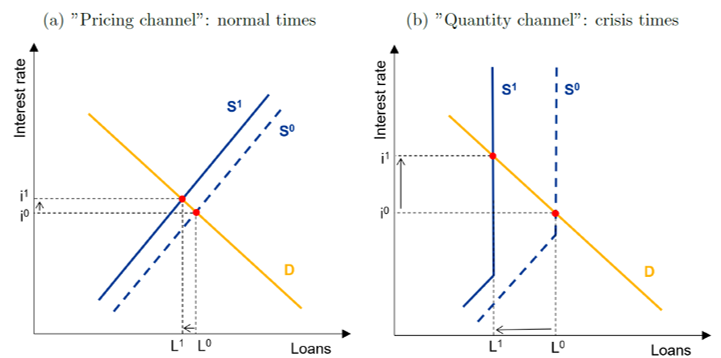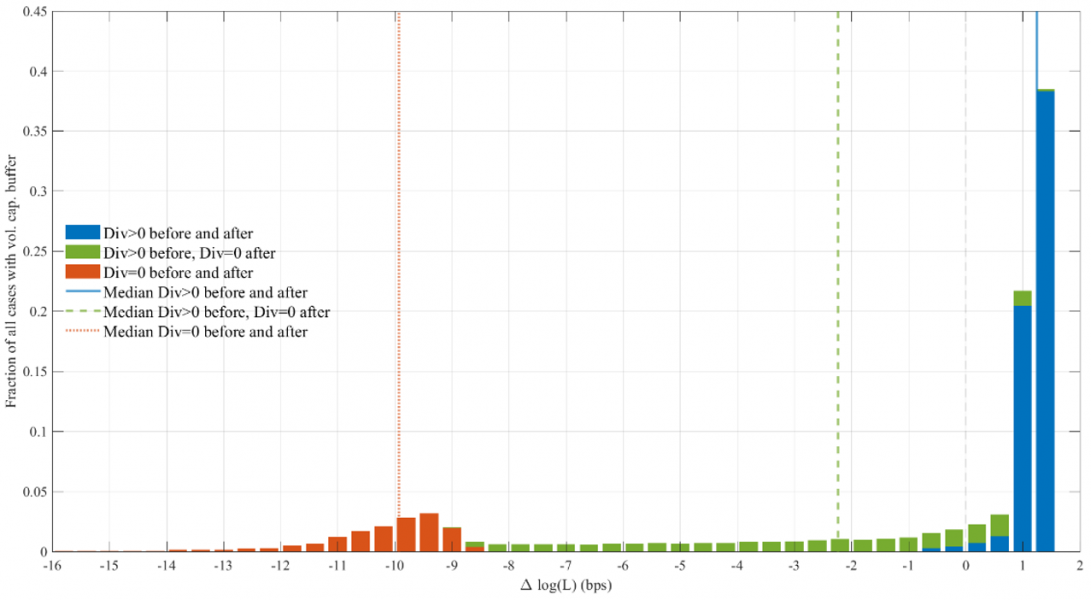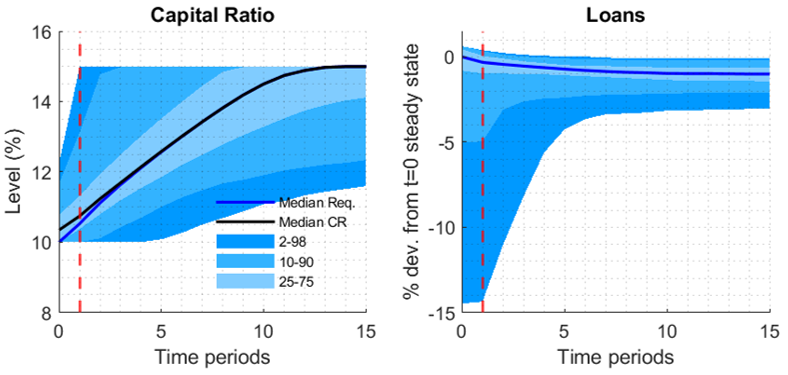References
Arbatli-Saxegaard, Elif C. and Ragnar Enger Juelsrud, “Countercyclical capital requirement reductions, state dependence and macroeconomic outcomes,” Working Paper 9/2020, Oslo 2020.
Basel Committee on Banking Supervision, “Guidance for national authorities operating the countercyclical capital buffer,” December 2010.
Best, Michael Carlos, James S Cloyne, Ethan Ilzetzki, and Henrik J Kleven, “Estimating the Elasticity of Intertemporal Substitution Using Mortgage Notches,” Review of Economic Studies, 2020, 87 (2), 656–690.
Bhutta, Neil and Daniel Ringo, “The effect of interest rates on home buying: Evidence from a shock to mortgage insurance premiums,” Journal of Monetary Economics, 2021, 118 (C), 195–211.
Bridges, Jonathan, David Gregory, Mette Nielsen, Silvia Pezzini, Amar Radia, and Marco Spaltro, “The impact of capital requirements on bank lending,” Bank of England working papers 486, Bank of England January 2014.
Carlson, Mark, Hui Shan, and Missaka Warusawitharana, “Capital ratios and bank lending: A matched bank approach,” Journal of Financial Intermediation, 2013, 22 (4), 663–687.
Clerc, Laurent, Alexis Derviz, Caterina Mendicino, Stephane Moyen, Kalin Nikolov, Livio Stracca, Javier Suarez, and Alexandros P. Vardoulakis, “Capital Regulation in a Macroeconomic Model with Three Layers of Default,” International Journal of Central Banking, June 2015, 11 (3), 9–63.
Cozzi, Gabriele, Matthieu Darracq Pariès, Peter Karadi, Jenny Körner, Christoffer Kok, Falk Mazelis, Kalin Nikolov, Elena Rancoita, Alejandro Van der Ghote, and Julien Weber, “Macroprudential policy measures: macroeconomic impact and interaction with monetary policy,” Working Paper Series 2376, European Central Bank February 2020.
Darracq-Pariès, Matthieu, Christoffer Kok, and Diego Rodriguez-Palenzuela, “Macroeconomic Propagation under Different Regulatory Regimes: Evidence from an Estimated DSGE Model for the Euro Area,” International Journal of Central Banking, December 2011, 7 (4), 49–113.
Davis, Morris A., Stephen D. Oliner, Tobias J. Peter, and Edward J. Pinto, “The Impact of Federal Housing Policy on Housing Demand and Homeownership: Evidence from a Quasi-Experiment,” Journal of Housing Economics, 2020, 48 (C).
DeFusco, Anthony A. and Andrew Paciorek, “The Interest Rate Elasticity of Mortgage Demand: Evidence from Bunching at the Conforming Loan Limit,” American Economic Journal: Economic Policy, February 2017, 9 (1), 210–240.
De Jonghe, Olivier, Hans Dewachter, and Steven Ongena, “Bank capital (requirements) and credit supply: Evidence from pillar 2 decisions,” Journal of Corporate Finance, 2020, 60 (C).
Gerali, Andrea, Stefano Neri, Luca Sessa, and Federico M. Signoretti, “Credit and Banking in a DSGE Model of the Euro Area,” Journal of Money, Credit and Banking, 09 2010, 42 (s1), 107–141.
Gertler, Mark and Nobuhiro Kiyotaki, “Financial Intermediation and Credit Policy in Business Cycle Analysis,” in Benjamin M. Friedman and Michael Woodford, eds., Handbook of Monetary Economics, Vol. 3, Elsevier B.V., 2010.
Jiménez, Gabriel, Steven Ongena, José-Luis Peydró, and Jesús Saurina, “Macroprudential Policy, Countercyclical Bank Capital Buffers, and Credit Supply: Evidence from the Spanish Dynamic Provisioning Experiments,” Journal of Political Economy, 2017, 125 (6), 2126–2177.
Lang, Jan Hannes and Dominik Menno, “The state-dependent impact of changes in bank capital requirements”, Working Paper Series 2828, European Central Bank, July 2023.
Mendicino, Caterina, Kalin Nikolov, Javier Suarez, and Dominik Supera, “Optimal Dynamic Capital Requirements,” Journal of Money, Credit and Banking, September 2018, 50 (6), 1271–1297.
Mora, Nada and Andrew Logan, “Shocks to bank capital: evidence from UK banks at home and away,” Applied Economics, March 2012, 44 (9), 1103–1119.
Sivec, Vasja and Matjaz Volk, “Bank response to policy-related changes in capital requirements,” The Quarterly Review of Economics and Finance, 2021, 80 (C), 868–877.








